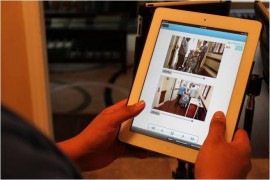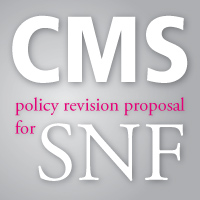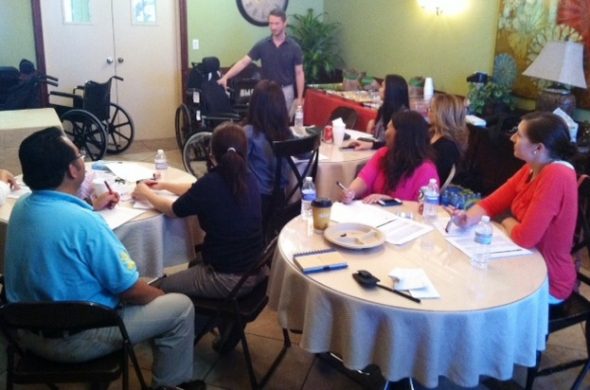 I am probably not alone in the summation that the world of physical therapy has drastically changed in the last several years or so. I may be biased, seeing as I work in one, but it seems to me that the setting that has felt the most impact of these changes has been in the skilled nursing facility (SNF) setting. Most noteworthy was the transition from the fee-for-service payment system to the prospective payment system; then most therapists grudgingly went through the transition from paper to more sophisticated computer documentation. Let’s not even get into the multitude of changes in the Medicare system itself, where the requirement for more objective and significant measures of progress is ever-growing. Because the predominant clientele of a SNF is usually medically highly involved — but less cognitively aware — elderly who at times require more sophisticated forms of encouragement, showing objective proofs of actual progress often can be difficult.
I am probably not alone in the summation that the world of physical therapy has drastically changed in the last several years or so. I may be biased, seeing as I work in one, but it seems to me that the setting that has felt the most impact of these changes has been in the skilled nursing facility (SNF) setting. Most noteworthy was the transition from the fee-for-service payment system to the prospective payment system; then most therapists grudgingly went through the transition from paper to more sophisticated computer documentation. Let’s not even get into the multitude of changes in the Medicare system itself, where the requirement for more objective and significant measures of progress is ever-growing. Because the predominant clientele of a SNF is usually medically highly involved — but less cognitively aware — elderly who at times require more sophisticated forms of encouragement, showing objective proofs of actual progress often can be difficult.
Even fellow healthcare providers and family members alike can sometimes question just how much progress the patient is making. As humans, the old adage that “seeing is believing” is a strong weapon to use to show that what we do as therapists is working and can be measured. The family member who lives in a different city and has not seen her mother walk for two years will question any therapist who tells her that Mom is now able to take five steps with a walker. The doctor who has been treating a patient he considers as bedbound and needs total assist for all ADLs will not believe that Mr. Smith is now able to feed himself with supervision. But what if there were a software application that a therapist could use to make this task of providing undeniable visual proof that a patient is making progress? Enter Kinesioplus software.
This simple mobile application actually originated to address the difficulties mentioned earlier: to help therapists show families and their respective doctors the very visual evidence that the patient is, indeed, making progress. As their website (www.Kinesioplus.com) offers, this user-friendly app “gives you the power of video imaging, reinforced with editing options to analyze ROM, input comments, or make circles and lines to correct identified errors during sessions. For objective analysis of movement, Kinesioplus also gives you the option of comparing videos side by side for easy comparison on week-by-week progress.”
In a nutshell, after getting the patient’s (or their responsible party’s) signed consent, you can videotape the patient using the app. The beauty of the software comes with what you do with the images you get. At first, you can use the original image to show the patient’s baseline, which in itself can be an eye-opener for the loved ones who have not seen the patient in weeks. And, yes, you can do a side-by-side comparison of how the patient performed a certain functional task on a weekly basis to show the progress. However, the saved image also can be used hours later to help the licensed therapist type up a more analytical report. By looking at a recorded image, the therapist may see something to address that may not have been as obvious, while the therapist was busy physically assisting the patient or providing verbal/tactile cues.
Taking treatment a step further, you can also videotape the patient as they perform their exercises to make a home exercise program (HEP) upon discharge. As most of us know, most patients need more than the two-dimensional paper that we often hand them when they leave the SNF. When we provide patients and their families with a video of the actual patient doing the exercise and hear his or her therapist providing the instructions, more often than not, they will remember the exercise better. Imagine a patient with Alzheimer’s who goes home and hears a favorite therapist telling her to work out versus a family member or caregiver giving her instructions to lift her leg up and down. In cases where the patient or family does not have the available technology to play the video at home, the images can be printed on paper with written instructions. And to use today’s high-speed technology even more, the images/exercises can be sent via email or text messages to any involved parties.
With the convenience of all these technological resources available to use with the app, the next question might naturally lead to privacy issues. Considering that the two founders/owners of this software application are a software engineer and physical therapist/Rehab Director of an SNF, these concerns were highly anticipated. According to the founders, their app is “compliant with HIPPA regulation. All access to the application and website are all secured with password unique to each user. All information inside the application is separated for each treating doctor. All therapists treating the patient can see all their information. Patients can also access their own progress report with a randomized password given to them for safe access. All information is encrypted to the fullest safeguarding of documents to comply with HIPPA regulations. Therapists will not be able to open the case of a patient if they haven’t signed the consent form provided before opening each case to protect the facility, the therapists and the patient for any misuse of the information.”
One can argue that a regular video camera/smartphone/handheld device can be used for the same purpose of showing the patient’s progress. Why does a therapist need this app to fulfill this goal? The founders argue that their mobile app “gives you the power of video imaging reinforced with editing options to analyze ROM, input comments, make circles and lines to correct identified errors during sessions. For objective analysis of movement, Kinesioplus also gives you the option of comparing videos side by side for easy comparison of week-by-week progress. This app also gives you the ability to share the client’s image with edited version of the video that can support home exercise programs or give a report to other clinicians or even for the client or client’s family to report progress. This app rivals the expensive applications, and it will give you the same analytical perspective at a very affordable price.”
The possibilities with Kinesioplus are exciting! We look forward to this application becoming available for our facilities soon.
By Lisette Maico-Tan, DPT, Brookfield Healthcare Center, Downey, CA

 FY2014 Medicare SNF Proposed Revisions are Limited
FY2014 Medicare SNF Proposed Revisions are Limited








